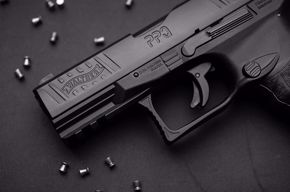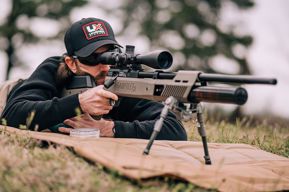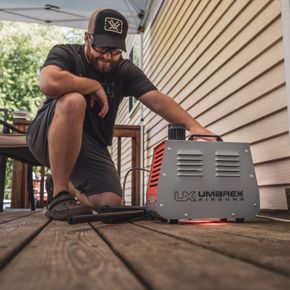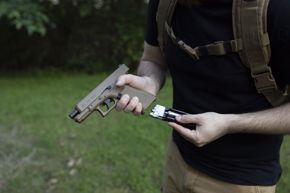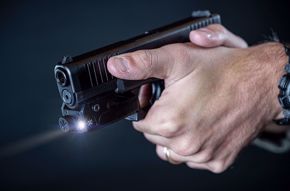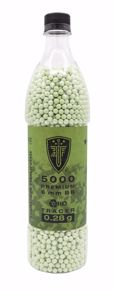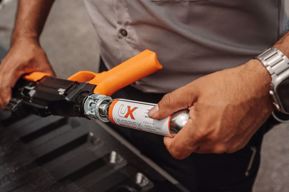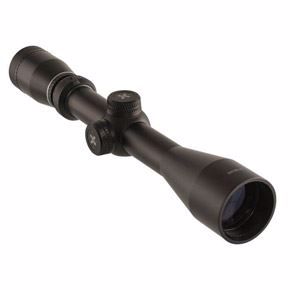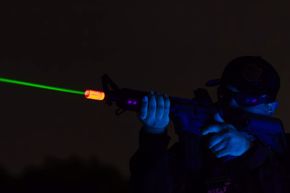The answer is simple, really and the answer is in the question. Pre-Charged Pneumatics (PCPs) are pre-charged. They’re ready to go when you pull the trigger. And they’re pneumatic, which is a polysyllabic word favored by mechanics that means air-powered.
A PCP air gun takes some of the exercise out of shooting air guns. If you’ve ever spent an afternoon in the field muscling over a spring powered piston, you’ll understand what I mean.
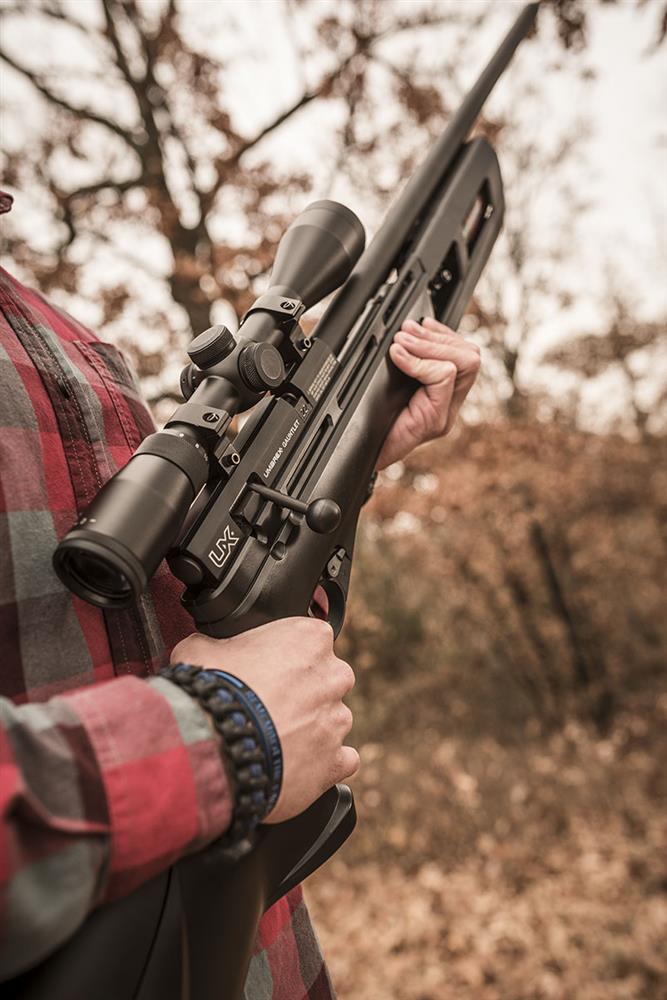 But just how does a PCP disperse just enough air to consistently fire a pellet? Let’s step back a bit. Air guns, at their most basic, are no different from almost all other guns. Something has to push the projectile out of the barrel. Rimfire and centerfire guns do this by igniting explosive powder behind the bullet. The expanding gasses create the energy needed to send the bullet down the barrel.
But just how does a PCP disperse just enough air to consistently fire a pellet? Let’s step back a bit. Air guns, at their most basic, are no different from almost all other guns. Something has to push the projectile out of the barrel. Rimfire and centerfire guns do this by igniting explosive powder behind the bullet. The expanding gasses create the energy needed to send the bullet down the barrel.
Air guns accomplish the same thing, only without the fire.
The question then becomes how to store the air needed. Most guns have a reservoir of sorts that, when tapped, releases a burst of air (or CO2). There are numerous time-tested models for how this happens.
Some guns have levers that compress air. One compression powers one shot. Some of these guns have pistons, some have springs. Regardless of the internals, the charging method remains the same. Muscle power and simple leverage.
Multi-pump guns fill the reservoir the same way you would pump up a bike tire. The objective is still one shot, though. Clack clack clack.
CO2 guns are closer to what we would think of as semi-automatic. One canister or cartridge will hold enough compressed CO2 for numerous shots. Some guns still require you to load pellets or BBs individually while action pistols usually have 8 rounds clips or large capacity drop-free magazines.
The Pre-Charged Pneumatics are a similar concept, except the user fills a refillable reservoir. Most fill them with compressed air from separate tanks (SCUBA tanks are popular). Others pump them up with high-compression manual pumps. The reservoir, or tank, on the rifle holds the compressed air.
The question still remains. How does a PCP gun release just enough gas to fire a shot? Why doesn’t it release too much gas?
The trick is in a balance of energy. The air in the tank is pressing a valve closed. This keeps the air trapped inside the tank.
When the gun is cocked, a hammer inside is ready to fall. When the trigger is pulled, this hammer falls onto a plunger in front of the valve. The energy from the falling hammer pushes the valve open. When the energy from that hammer strike is spent, the pressure in the tank pushes back and closes the valve.
In unregulated PCP guns, this is a direct process. The hammer opens the valve for a split second and air escapes. That air is funneled behind the pellet, which rockets out of the gun. The length of the barrel (to a point) helps maximize the expansion of the air behind the pellet, increasing its velocity.
This burst of air, though, can produce slight variations from shot to shot. And shots at the beginning of the shot string and at the end tend to vary even more. At the start, the pressures can be high enough that the valve closes too quickly. At the end, there’s not enough air to close the valve effectively.
Regulated PCPs, on the other hand, insert another step. The regulator ensures that the pressure in its tank is consistent, shot to shot. The first shots in the string have the same basic energy signature as the last ones until the tank is depleted.
A regulator is an ingenious device. It is, in essence, a second reservoir. Positioned between the tank and the hammer, a regulator has its own valves that allow just enough pressure in and out. This means that shots at the start of a string have the same velocity as those all the way to the end.
If you haven’t spent time on the range with a PCP, you should. It is rewarding to be able to focus on accuracy, trigger discipline, and timing, without the intrusion of the exercise required by some other air gun actions.
David Higginbotham is a writer and educator who lives in Arkansas. After years of writing and consulting in the firearms industry, he's coming back to his roots with air guns.

